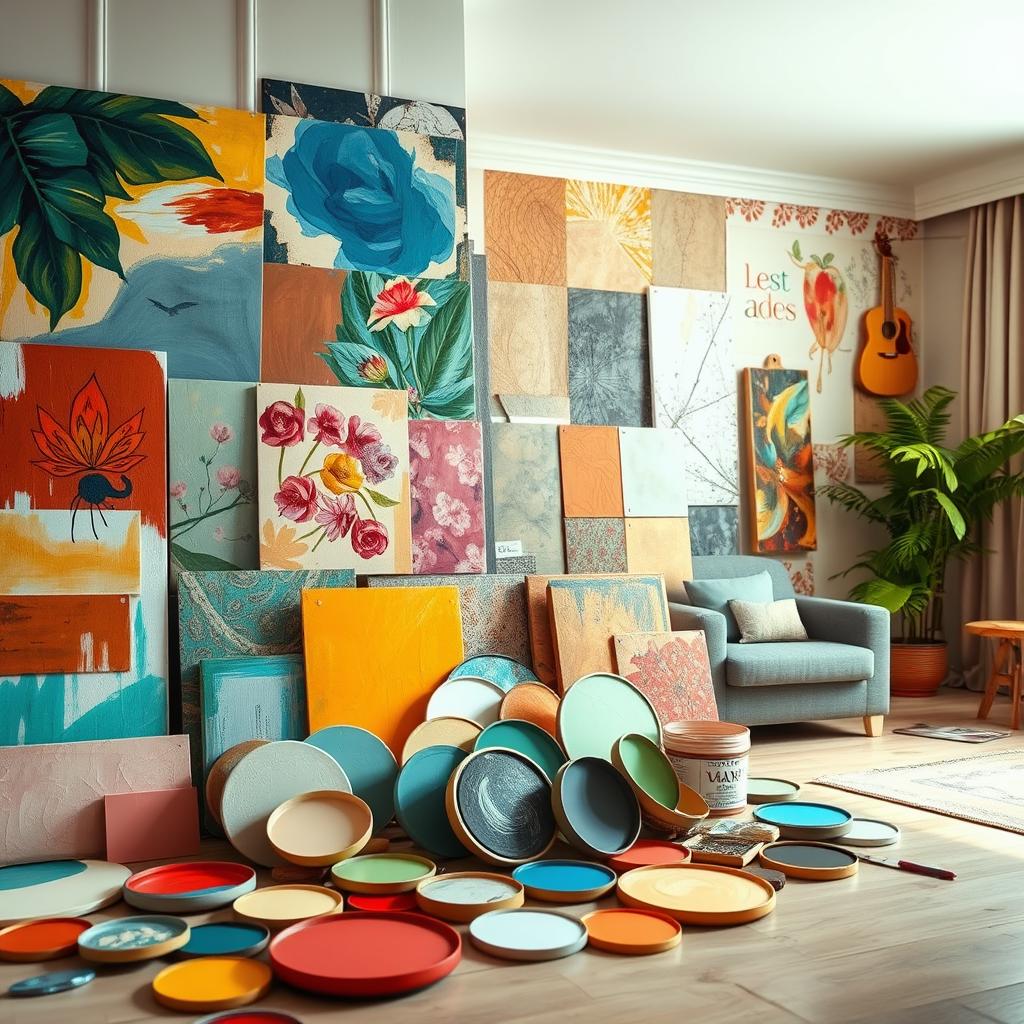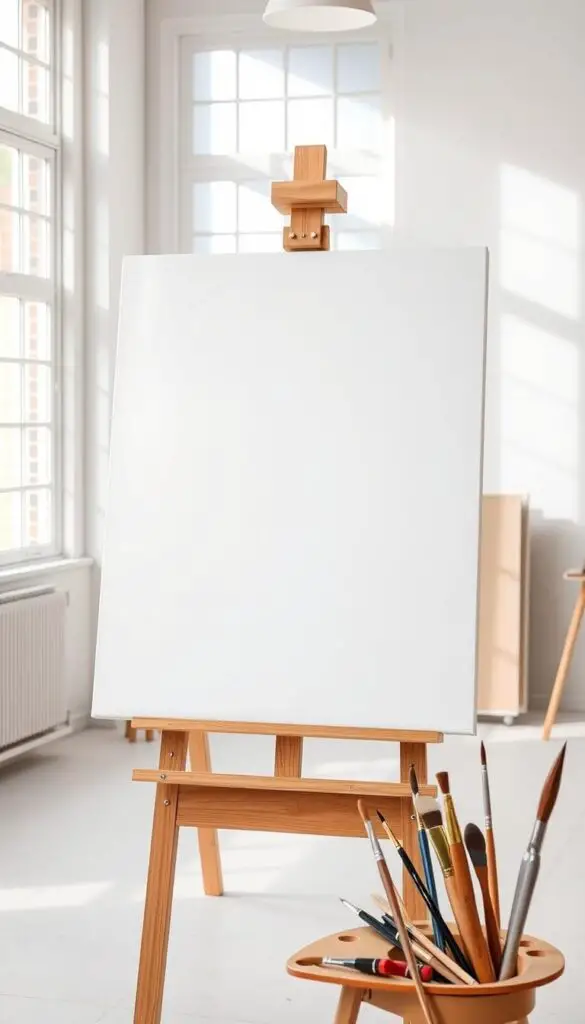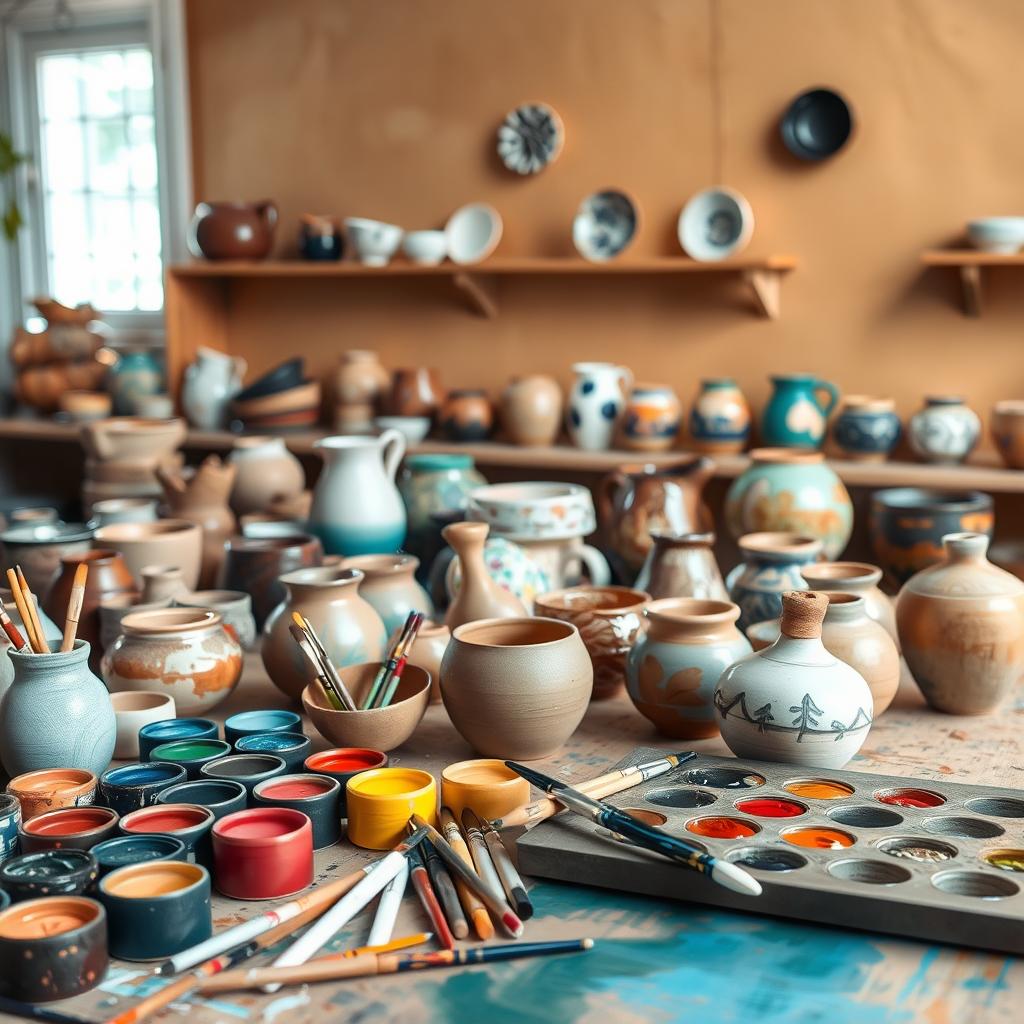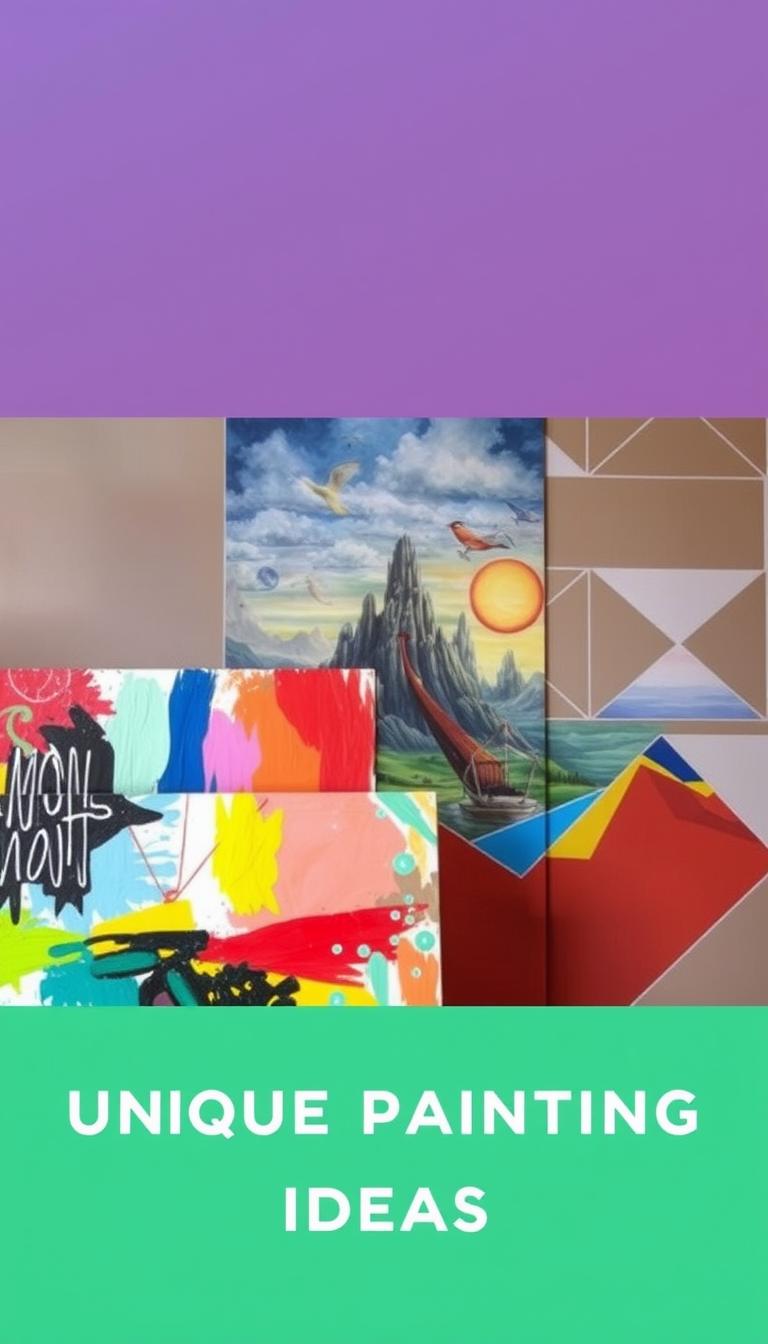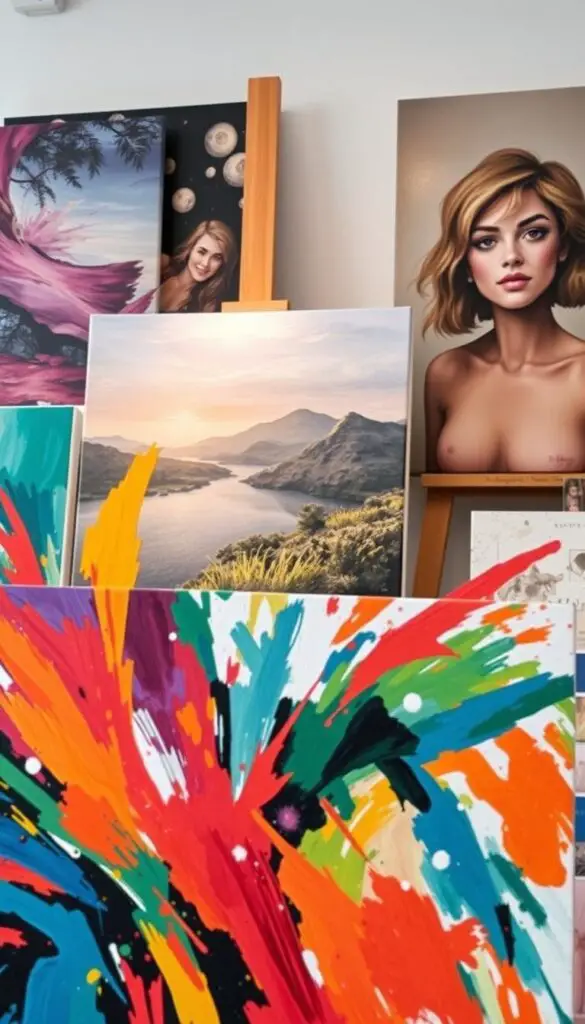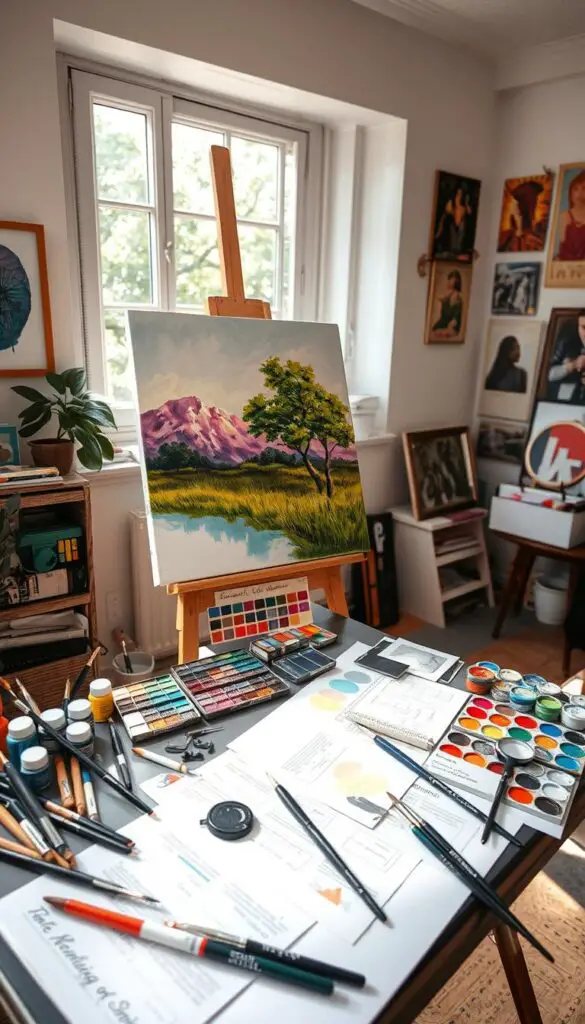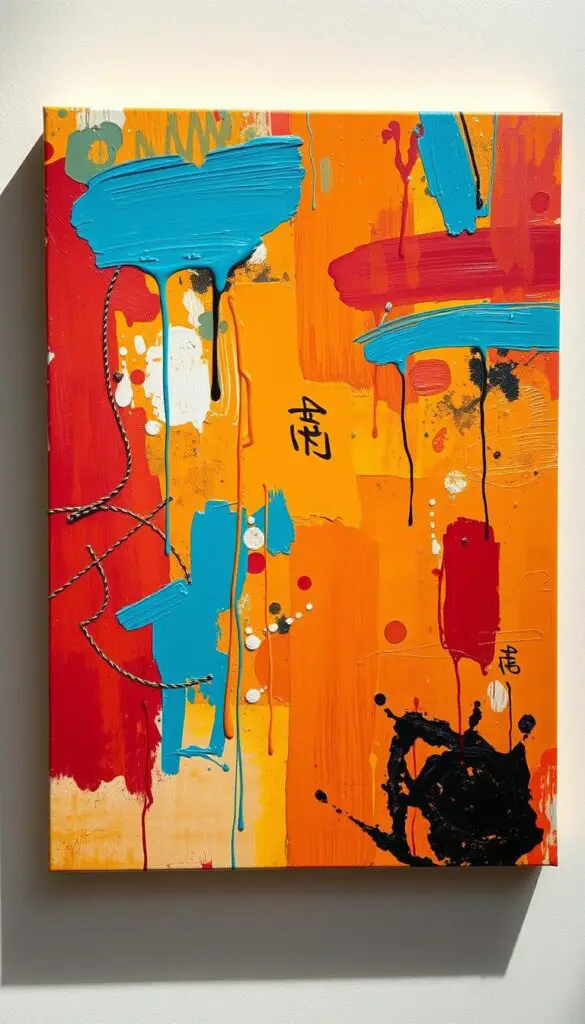Did you know that 75% of beginner artists feel intimidated by abstract art but find it surprisingly fun and meditative once they start? Whether you’re a seasoned creator or just picking up a brush for the first time, there’s something magical about transforming a blank canvas into a vibrant masterpiece with some cool acrylic painting ideas.
Acrylic paint is a versatile and fast-drying medium, making it perfect for experimenting with bold colors and textures. From whimsical floral designs to serene nature themes, these projects are designed to inspire creativity at every skill level. You’ll find step-by-step tutorials, creative tips, and techniques to help you bring your vision to life.
Whether you’re working on a canvas or exploring new textures, this guide offers easy-to-follow ideas that make the process enjoyable. Dive in and discover how simple it can be to create stunning art that reflects your unique style.
Key Takeaways
- Acrylic paint is versatile and dries quickly, ideal for beginners and pros.
- Abstract art is a great starting point for creative freedom.
- Floral and nature themes are popular and relaxing to paint.
- Step-by-step tutorials make learning easy and fun.
- Experiment with bold colors and textures to find your style.
Understanding Acrylic Paint and Techniques
One of the most versatile mediums, acrylic paint offers endless creative possibilities. Its fast-drying nature and vibrant colors make it a favorite among artists of all skill levels. Whether you’re a beginner or a pro, understanding its unique properties and techniques can elevate your work.
What Makes Acrylic Paint Unique
Acrylic paint dries quickly, allowing artists to layer colors without long waits. Unlike oil-based mediums, it’s water-soluble, making cleanup easy. Its opacity ensures bold, vibrant results, even on darker backgrounds. Many artists appreciate its adaptability, as it works on surfaces like canvas, wood, and fabric.
Professional creators often choose acrylic for its versatility. From detailed brushwork to textured impasto techniques, it’s a medium that encourages experimentation. Its quick drying time also makes it ideal for step-by-step tutorials, helping beginners build confidence.
Essential Tools and Materials
To get started, you’ll need a few key tools. Quality brushes are essential for precise strokes and blending. A palette helps mix colors effectively, while a supportive background ensures your work lasts. Here’s a quick guide to the basics:
| Tool | Purpose |
|---|---|
| Brushes | Create fine details and broad strokes. |
| Palette | Mix and test colors before applying. |
| Background | Provides a stable surface for your work. |
Experimenting with different tools can enhance your technique. For example, palette knives create bold textures, while sponges add unique patterns. Don’t be afraid to try new methods to find your style.
Mastering acrylic paint involves understanding its properties and using the right tools. With practice, you can create stunning, textured artworks that reflect your creativity. Start exploring today and see where your imagination takes you!
Choosing the Right Canvas for Your Artwork
The foundation of any great artwork starts with the right surface. A quality canvas not only enhances the vibrancy of your colors but also ensures your design stands the test of time. Whether you’re a beginner or a seasoned artist, understanding the benefits of painting on canvas can elevate your creative process.
Benefits of Painting on Canvas
Canvas is the go-to surface for many artists due to its durability and versatility. Its textured surface adds depth to your artwork, making it ideal for bold brushstrokes and layered techniques. Unlike paper, canvas provides a sturdy foundation that can handle multiple coats of paint without warping.
Another advantage is its ability to enhance color vibrancy. A properly primed canvas ensures your colors pop, creating a striking visual impact. Whether you’re working on a small, detailed piece or a large, expressive design, canvas offers the flexibility to bring your vision to life.
How to Prepare Your Canvas
Preparing your canvas is a crucial step in the creative process. Start by selecting the right type—cotton duck is affordable and versatile, while linen is preferred for its strength and durability. Next, ensure your canvas is properly primed to enhance paint adhesion and longevity.
Here’s a quick guide to priming your canvas:
| Step | Description |
|---|---|
| 1. Clean the Surface | Remove any dust or debris with a soft cloth. |
| 2. Apply Gesso | Use a brush to apply a thin, even layer of gesso. |
| 3. Let It Dry | Allow the gesso to dry completely before adding another layer. |
| 4. Sand Lightly | For a smoother surface, lightly sand between coats. |
By following these steps, you’ll create a surface that’s ready to support your artwork and bring your design to life. A well-prepared canvas sets the stage for dynamic, layered creations that reflect your unique style.
acrylic painting ideas
Unleash your creativity with these inspiring artistic projects. Whether you’re a beginner or a seasoned artist, there’s something here to spark your imagination. From bold abstract designs to playful floral motifs, these ideas are perfect for exploring new techniques and styles.
Abstract and Textured Creations
Abstract art is a fantastic way to experiment with color and texture. Use bold brushstrokes and layering techniques to create depth and movement. Try blending different shades or using palette knives for a unique finish. This approach is perfect for those who want to let go of perfection and focus on fun and expression.
For added dimension, incorporate materials like sand or tissue paper into your work. These elements can transform a simple piece into a tactile masterpiece. Abstract art is all about freedom, so don’t be afraid to break the rules and explore unconventional methods.
Funky Florals and Whimsical Motifs
Floral designs are a timeless choice for artists of all levels. Add a twist by experimenting with vibrant colors and unconventional shapes. Think oversized petals, bold outlines, and unexpected backgrounds. This style is a great way to combine inspiration from nature with your own creative flair.
Whimsical motifs, like cartoonish animals or dreamy landscapes, can also bring a playful touch to your work. These designs are perfect for beginners, as they encourage experimentation without the pressure of realism. Let your imagination run wild and create something truly unique.
Innovative Approaches for Beginners
If you’re new to this medium, start with easy acrylic projects that build confidence. Simple geometric patterns or color-block designs are great for practicing brush control and color mixing. These techniques are straightforward but can result in stunning, modern pieces.
Another beginner-friendly idea is to focus on a single flower or object. This allows you to concentrate on details without feeling overwhelmed. Tutorials can be a helpful resource, guiding you step-by-step through the process. Remember, the goal is to have fun and enjoy the journey of creating.
By exploring these acrylic painting ideas, you’ll discover new ways to express yourself and develop your skills. Whether you’re drawn to abstract art, playful florals, or beginner-friendly projects, there’s no limit to what you can create.
Exploring Versatile Themes and Styles
Artists often find inspiration in the world around them, transforming everyday scenes into captivating works. Whether it’s a serene landscape or a bustling cityscape, the themes you choose can reflect your unique perspective. The versatility of this medium allows for endless creativity, making it easy to explore diverse styles and techniques.
Landscapes, Cityscapes, and Still Life
Capturing the beauty of nature or the energy of urban life starts with understanding depth and detail. For a tranquil landscape, focus on blending colors to create a soft sky or a vibrant sunset. Use bold brushstrokes to highlight the texture of a tree or the reflection in a calm lake.
Cityscapes, on the other hand, thrive on sharp contrasts and dynamic lines. Experiment with geometric shapes to portray skyscrapers or use a mix of warm and cool tones to depict a bustling street scene. Still life offers a chance to practice precision, whether it’s a vase of flowers or a bowl of fruit. Pay attention to lighting and shadows to bring your subject to life.
Modern Abstract and Traditional Subjects
Abstract art encourages freedom and experimentation. Play with bold colors and unconventional shapes to create a unique narrative. Techniques like layering and blending can add depth, while unexpected textures can make your work stand out.
Traditional subjects, like portraits or seascapes, require attention to detail. Use a mix of techniques to capture the essence of your subject. For example, a dramatic sunset over the ocean can be enhanced with gradients and soft transitions. For portraits, focus on facial features and expressions to convey emotion.
By exploring these themes, you’ll discover new ways to express yourself and develop your skills. Whether you’re drawn to the tranquility of nature or the energy of urban life, there’s no limit to what you can create.
Step by Step Tutorials for Creative Expression
Ready to dive into a creative journey? Let’s explore step-by-step tutorials to bring your vision to life. Whether you’re a beginner or looking to refine your skills, these guides will help you master essential methods and develop your unique style.
Easy Techniques and Methods
Start with simple techniques like layering and blending. These foundational skills are perfect for creating depth and texture in your work. Use a brush to experiment with different strokes and see how they transform your design.
Online classes, such as those on Skillshare, break down complex processes into manageable steps. These resources are ideal for beginners who want to get started with confidence. Follow along with expert instructors to learn new tricks and refine your approach.
Developing Your Own Process
Once you’ve mastered the basics, it’s time to develop your personal process. Experiment with shape and line to create unique, signature pieces. Don’t be afraid to try unconventional methods—this is where your creativity truly shines.
Quality supplies make a big difference. Invest in good brushes and paints to ensure your work stands out. As you practice, you’ll discover what techniques work best for you and how to incorporate them into your style.
Remember, every artist’s journey is unique. Use these tutorials as a starting point, but let your imagination guide you. With time and practice, you’ll create stunning pieces that reflect your vision and passion.
Adding Personal Flair to Your Painting
Adding a personal touch to your artwork can transform it from ordinary to extraordinary. Whether you’re experimenting with bold colors or incorporating abstract elements, your unique style can shine through. This section explores how to infuse your work with individuality and creativity.
Incorporating Abstract Designs and Vibrant Colors
Abstract art is a powerful way to express your personality. By using vibrant colors and dynamic shapes, you can create pieces that reflect your inner world. Start by experimenting with bold brushstrokes and layering techniques to add depth and movement.
Consider using unconventional tools like palette knives or sponges to create unique textures. These methods allow you to break free from traditional rules and explore your creativity. Remember, there’s no right or wrong in abstract art—just your vision.
Techniques for Personalizing Your Work
Here are some practical techniques to add a personal signature to your artwork:
| Technique | Description |
|---|---|
| Layering | Build depth by adding multiple layers of color. |
| Intentional Brushwork | Use deliberate strokes to create unique patterns. |
| Mixed Media | Incorporate materials like sand or tissue paper for texture. |
| Color Blocking | Use bold, contrasting colors to make your work stand out. |
Inspiration can come from anywhere—nature, music, or even your daily life. Let these influences guide your creative process. Don’t be afraid to make mistakes; they can often lead to unexpected and innovative design choices.
By embracing these techniques, you’ll create artwork that’s uniquely yours. Whether you’re drawn to abstract art or vibrant colors, your personal flair will make your work unforgettable.
Conclusion
Embarking on a creative journey with acrylics opens up a world of endless possibilities. From bold abstract designs to serene landscapes, the techniques and ideas shared in this article are designed to inspire artists of all levels. With the right tools and a well-prepared background, you can create stunning pieces that reflect your unique style.
Remember, every work of art is a personal expression. Whether you’re experimenting with a single layer or diving into a multi-step class, the process is as rewarding as the final result. Don’t hesitate to revisit tutorials and explore new methods to expand your skills.
Creativity knows no bounds. Let your imagination guide you, and soon you’ll be crafting pieces that are as unique as Starry Night. So, grab your brushes, prepare your paper, and start your next project today. The painting community awaits your masterpiece!
FAQ
What makes acrylic paint unique compared to other mediums?
Acrylic paint dries quickly, is water-soluble, and offers vibrant colors. It’s versatile, working well on various surfaces like canvas, paper, and wood.
What tools and materials do I need to get started?
Essential items include brushes, a palette, a canvas, and acrylic paints. Optional tools like sponges or palette knives can add texture and depth to your work.
Why is canvas a popular choice for artists?
Canvas is durable, provides a smooth surface, and enhances the longevity of your artwork. It’s also easy to prepare and frame.
How do I prepare a canvas before starting?
Apply a primer like gesso to create a smooth, even surface. This helps the paint adhere better and prevents it from soaking into the fabric.
What are some beginner-friendly techniques to try?
Start with simple methods like blending, layering, or using a dry brush. These techniques help build confidence and improve your skills over time.
Can I mix different styles in one piece?
Absolutely! Combining abstract designs with traditional elements or vibrant colors can add a unique personal touch to your artwork.
How can I add depth to my paintings?
Use techniques like shading, highlighting, and layering. Experiment with different brush strokes and textures to create a sense of dimension.
What themes are great for beginners?
Landscapes, flowers, and simple still life scenes are excellent starting points. They allow you to practice basic skills while creating something beautiful.
How do I develop my own artistic process?
Experiment with different techniques, tools, and subjects. Over time, you’ll discover what works best for you and develop a style that feels authentic.
Q: What are some easy acrylic painting ideas for beginners?
A: Some easy acrylic painting ideas for beginners include creating a simple flower vase, a sunset seascape, or abstract painting using basic shapes and colors. These projects can help beginners develop their acrylic painting skills without feeling overwhelmed.
Q: How can I ensure it’s easy to paint with acrylic?
A: To ensure it’s easy to paint with acrylic, start with a well-prepared canvas, use high-quality acrylic paints, and have a basic color palette ready. Practicing on smaller canvases can also help you build confidence.
Q: What is the best way to mix the colors when using acrylic paint?
A: The best way to mix colors when using acrylic paint is to use a palette and a clean brush. Start with a small amount of paint and gradually add more of the color you want to create. It’s important to mix evenly to achieve the desired hue.
Q: How do I create highlights and shadows in my acrylic paintings?
A: To create highlights and shadows in your acrylic paintings, use thicker layers of paint for highlights and thinner layers for shadows. Incorporating contrasting colors can also enhance depth and dimension in your artwork.
Q: Can I use masking tape for my acrylic painting projects?
A: Yes, masking tape is great for acrylic painting projects. It helps create crisp lines and can be used to cover areas you don’t want to paint. Just ensure it’s properly adhered to the canvas to prevent paint from seeping underneath.
Q: What are some popular types of paintings to try with acrylics?
A: Popular types of paintings to try with acrylics include abstract painting, landscape scenes, and wall art featuring florals or tropical themes. Each of these can be adapted to suit different skill levels.
Q: How long does it take for acrylics to completely dry?
A: Acrylics dry relatively quickly, usually within 15 to 30 minutes, depending on the thickness of the paint. However, it’s important to wait until the paint is completely dry before applying additional layers or varnish.
Q: Where can I see more ideas for acrylic painting projects?
A: You can see more ideas for acrylic painting projects on platforms like Pinterest, where you can find a variety of tutorials and inspiration for all skill levels.
Q: What materials do I need to get started with acrylic painting?
A: To get started with acrylic painting, you’ll need a canvas, acrylic paints, brushes of various sizes, a palette, water for rinsing brushes, and a pencil for sketching outlines. Optional items include varnish for finishing your artwork and masking tape for clean edges.
